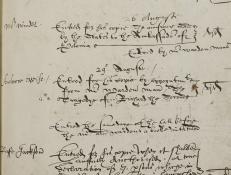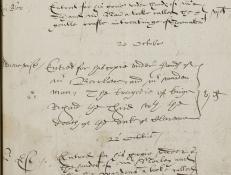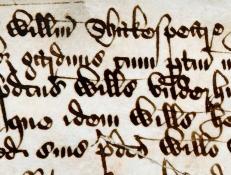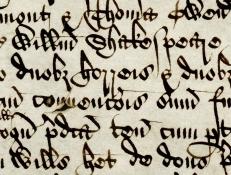To view a sortable list, please visit the Resource
All Documents
October 20, 1596
This draft grant of arms for John Shakespeare was prepared and written by William Dethick, Garter King of Arms, the most senior of the 13 heralds of the College of Arms. It is the first of two drafts of the grant, both dated October 20, 1596.
1596
The fourth edition of Shakespeare's popular narrative poem Venus and Adonis was published in 1596, three years after the first edition. This fourth edition was the last to be printed by Richard Field and sold by John Harrison.
February 4, 1596
In 1596 the actor and theater builder James Burbage bought property in Blackfriars, a London neighorhood on the site of a former monastery. His purchase included “seven great upper rooms as they are now divided” as well as some lower rooms and adjoining staircases and yards.
November 1596
This undated petition to the Privy Council signed by neighbors of a prospective playhouse in Blackfriars is one of three related documents, all in the same hand, among the State Papers in The National Archives:
January 1596
SHAKESPEARE DOCUMENTED IS STILL GROWING! Descriptive content and transcriptions will continue to be added, updated and expanded. Check back for regular updates!
November 29, 1596
The enrolled entry known to Shakespeare scholars as the “Langley writ” was recorded in the Court of King’s Bench between October 29, 1596 and January 24, 1597. The writ constitutes presumptive evidence that William Shakespeare, formerly of St.
August 29, 1597
Richard II was entered into Liber C of the Stationers' Company on August 29, 1597. The title as entered reads "The Tragedye of Richard the Second".
October 20, 1597
Richard III was entered into Liber C of the Stationers' Company on October 20, 1597.
May 2-9, 1597
In May 1597, the freehold title to New Place passed from William Underhill to William Shakespeare. This would normally have been recorded in a formal deed of conveyance, signed by both parties.
1597
For details about the 1597 foot of fine, see the general essay for Shakespeare's purchase of New Place. The foot has a useful endorsement (the second image) recording the occasions when the final concord was "proclaimed" in open court, as requi

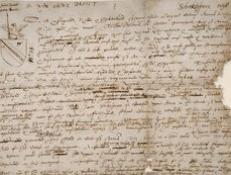
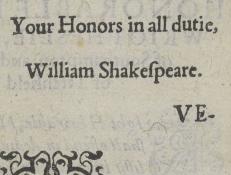
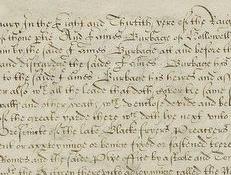
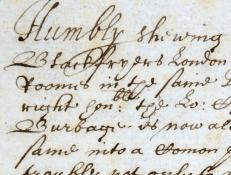
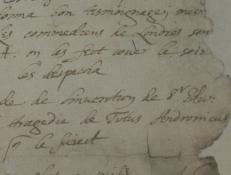
![The Langley writ [1], thumbnail detail](https://shakespearedocumented.folger.edu/sites/default/files/styles/document_thumbnail/public/document-thumbnails/KB29-234%20%281%29_thumbnail%20detail.jpg?itok=FAoIJUL_)
